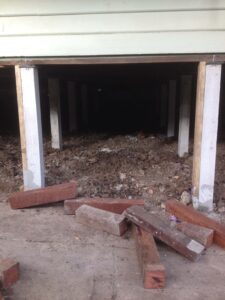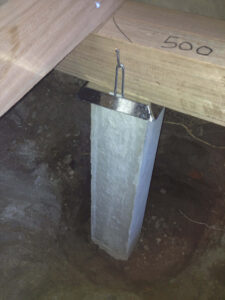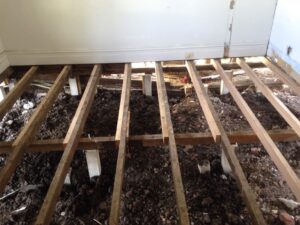Restumping
Restumping, often referred to as reblocking, is a crucial foundation repair process mainly done on weatherboard or fibre cement homes.
Common indicators your house needs stumps replaced:
- Noisy floorboards, tiles or carpets
- Windows and doors not closing properly
- Cracks in internal plastering
Process of house restumping:
- Firstly, we assess the job and discuss with owners all possible outcomes.
- We then remove all plinth and put in place hydraulic jacks to support the home whilst we work.
- Once supported, we remove the timber stumps, and repair or replace any parts of the floor that need work.
- We then put in place all concrete stumps and get them level and lined up for concrete.
- We pour the concrete and remove jacks once concrete has strengthened.
replaced red-gum stumps
New Concrete Stumps
Sub Floor being repaired









